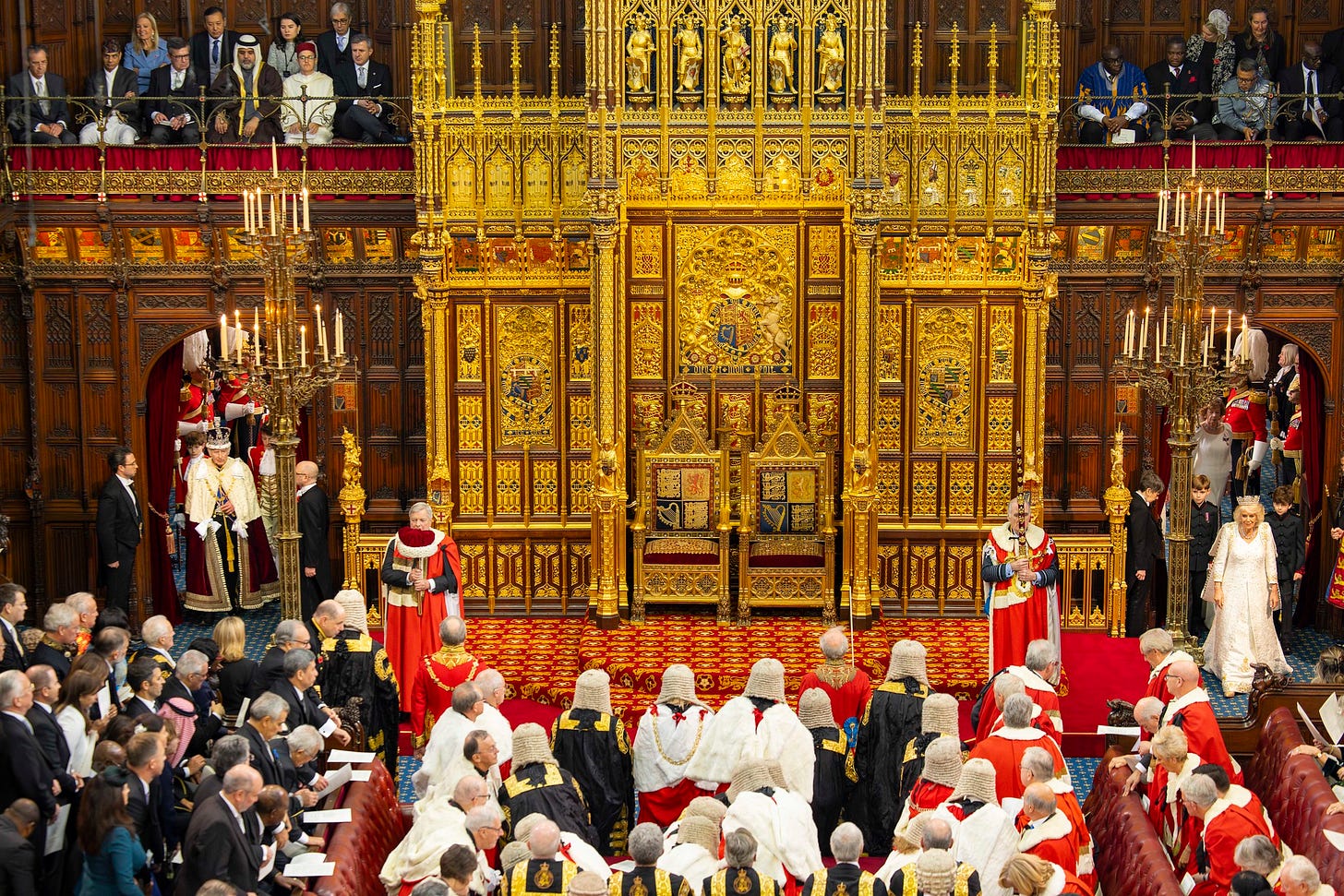Welcome
Thank you for being one of the very first people to read A Lord’s Eye View, my new email newsletter which will bring you a different perspective on how Parliament and government operates.
I will be bringing you the picture you see up close from the House of Lords, including what government really looks like when you judge it by the flow of new secondary legislation put through to Parliament almost every week it is sitting.
But for my first piece, here is something central to how the House of Lords operates. But something they don’t tell you before you get there…
The Chief Whip’s Ring Binder
For most people, what hits you when you enter the chamber of the House of Lords is the sprawling expanse of the Sovereign’s Throne, a super-sized dazzling expanse of furniture far larger than a mere chair for a person to sit on.
But what most hit me was a humdrum ring binder, clutched by the Government Chief Whip and which drives much of what happens in the chamber.
It being the Lords, I was hoping that there might be some intricate and obscure history behind the ring binder. Perhaps the metal hoops are made from cannons used in the Crimean War and the cover has a stain from when Winston Churchill spilt a whisky. But from intense staring at it, the prosaic reality seems more likely to involve Ryman’s - and Roy Kennedy, the Chief Whip, assures me it’s rather battered.
Whatever the binder’s provenance, however, it has a key – and overlooked – role in how the House of Lords operates.
Traditional descriptions of the way the House of Lords operates say that it is a self-regulating chamber. The Lord Speaker does not have the same powers or role as the Speaker in the House of Commons. Rather members regulate themselves – with the help of some conventions – on matters such as who gets to speak next.
What the self-regulating accounts leave out is that ancient/Ryman’s ring binder.
For some debates, there is a list of speakers, agreed in sequence in advance. All very civilised, knowing exactly who will speak in a debate and in what order. (All very sensible too, it seems to me, though proposals for a similar system in the House of Commons are controversial.)
Other items, such as supplementary questions during the various question times, are a more free flowing affair with people bobbing up to speak as and when they wish. The self-regulating account is that by some mix of convention (rotating among the different party groupings) and interpersonal signalling people untangle who goes next.
The reality, however, is the ring binder as it is the government Chief Whip who scribbles within it, keeping track of who has spoken, who wishes to speak and where there is doubt indicates who shall go next either gently with a tilt of the head through to firmly by standing up and heading to the dispatch box.
It is a system that can run into glitches, as when the Chief Whip recently had to get up to point out that four or five Conservatives were all wishing to speak at the same time and that, while it was definitely the turn for a Conservative to speak, they would have to decide among themselves who it should be.
It is also a system that only works because the Chief Whip carries out their role in a way that is fair to all the groupings in the House of Lords – and the data for this role comes from their ring binder.
Thank you
I hope you enjoyed reading this, and if you did please do encourage others to take a read too:
Best wishes,
Mark





